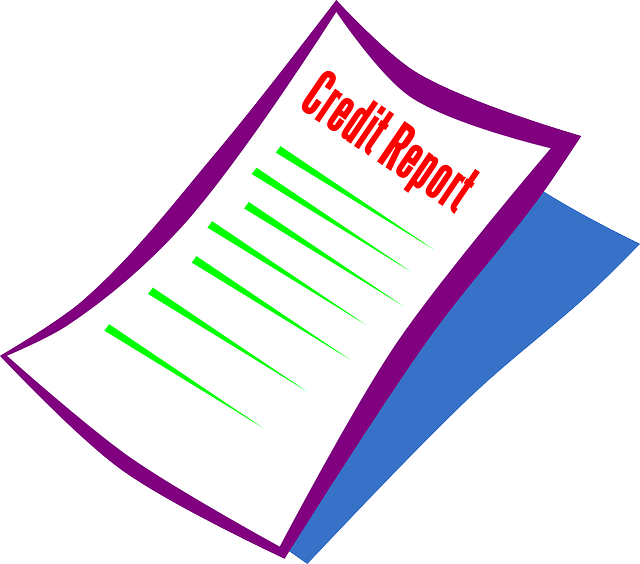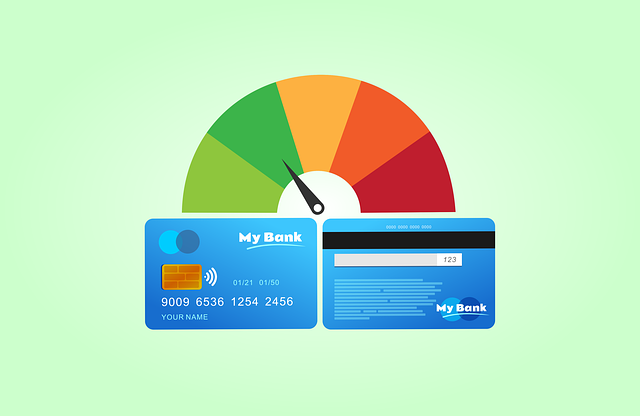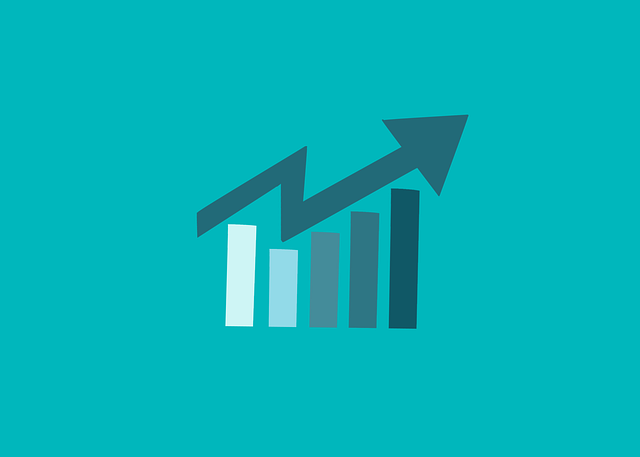What is a Credit Report?
Your credit report is a record of your credit activity that lenders and credit card issuers use to determine your creditworthiness. In some states, utility companies, insurance companies, and employers can access your credit file.
The information in the credit report is called your credit history. Three main credit bureaus produce consumer credit reports: Experian, Equifax, and TransUnion.
Each credit bureau calculates a credit score based on your credit history. The two primary credit scoring models are FICO® scores and VantageScores®, both of which are three-digit numbers ranging from 300-850. The higher the credit score, the better your credit standing.
The credit bureaus receive information from most financial institutions where you have a credit account. The bureaus record and compile the information. When you apply for new credit, you typically agree to let the financial company access your credit report.
Information in your credit report includes:
- How many credit cards you have or had.
- Current credit card balances.
- Available credit card limits.
- Any loans you have or had.
- Loan balances.
- Payment history for credit accounts and sometimes for utility or rent payments.
- Any other forms of credit you may have.
- How long each credit account has been active.
- Any defaults, charge-offs, foreclosures, or bankruptcies.
- Collections accounts from debt collectors.
- Personal identifying information (not used when calculating credit scores).
FICO Score Ranges
FICO scores are the most commonly used credit scores. Over 90% of the top lenders use FICO scores to make credit decisions. FICO credit score ranges are:
- Exceptional: 800-850.
- Very good: 740-799.
- Good: 670-739.
- Fair: 580-669.
- Poor: 300-579.
VantageScore Ranges
The three credit reporting agencies developed VantageScores to standardize consumer credit scores. While they’re less used, VantageScores are gaining more market share. VantageScore ranges are:
- Excellent: 781-850.
- Good: 661-780.
- Fair: 601-600.
- Poor: 500-600.
- Very poor: 300-499.
What Credit Report factors cause Bad Credit?
A bad FICO score is generally considered 580 and below, but some lenders view the lower end of fair credit scores (581-620) as bad credit since that range is regarded as subprime credit.
The credit bureaus calculate your credit score based on five key factors in your credit report, each weighted differently. Those scores are:
- Credit history: 35%.
- Amounts owed: 30%.
- Length of credit history: 15%.
- Credit mix: 10%.
- New credit: 10%.
Negative information in any of these categories will lower your credit score, but some have a greater impact.
Payment History
Since payment history is the most significant factor, any negative items in this category could significantly lower your credit score. Examples of adverse reports in payment history include:
- Late or missed payments – the longer unpaid, the more it lowers your score.
- Loan defaults or credit charge-offs.
- Collection account status.
- Foreclosures.
- Bankruptcy.
Amounts Owed
Amounts owed refer to your current debt, and having too much debt lowers your score. In particular, the credit bureaus use the credit utilization ratio to determine amounts owed. Also called credit usage, the credit utilization ratio takes your current debt over your available credit and converts it to a percentage. For example, a $1,000 balance on a $10,000 credit limit is a 10% credit utilization rate.
Credit usage rates over 30% can cause your credit score to go down. Significantly higher credit usage can lower your credit score into a bad credit range.
Length of Credit History
Also called account history or time in file, this measures how long a credit account has been active. The bureaus will look at the average age if you have multiple credit accounts. This simple calculation adds up the ages of all credit accounts and divides the sum by the number of accounts. For example, let’s say you’ve held one account for 15 years, another for 10 years, and one for 5 years. Add them up (30) and divide by the number of accounts (3) for an average age of 10 years.
The older your credit accounts, the better. Too many new or recently opened accounts lower your average account age, which can lower your score. It would be best to keep older accounts open and avoid new credit unless necessary (more on that below).
Credit Mix
Having diverse forms of credit helps get a credit score. Examples include revolving credit like credit cards or store credit, unsecured installment loans, and self-collateralized loans like mortgages or auto loans. Having too much of one form of credit could hurt your score.
New Credit
When applying for new credit, the lender requests your full credit report. This is called a hard credit inquiry, also called a hard pull. Each hard pull could lower your FICO score by as much as 5 points.
Hard inquiries stay on your credit report for two years but generally only affect your credit score for one year. Some credit and pre-eligibility applications use a soft credit pull, which doesn’t affect your credit.
How long do Late Payments Stay on the Credit Report?
- Late payments: 7 Years.
How long negative information lasts on credit reports depends on what it is. A late payment, or delinquency, is usually reported once it’s 30 days past due. Some people worry a missed payment of a few days might cause a negative credit file mark, but that’s not the case.
Missed payments remain on your credit report for seven years from when it was first reported. The later a payment becomes, the more significant its impact. So, payment 90 days past due lowers a credit score more than a 30-day delinquent account.
How long do Defaults, Charge-Offs, & Collections Stay on the Credit Report?
- Defaults: 7 years.
- Charge-Offs: 7 years.
- Collections: 7 years.
Accounts that go more than 120 days past due enter default status, which has a much more negative impact on your credit than a late payment. While in default, you have a 30-day window to catch up on payments before the debt gets charged off.
After 150 days past due, creditors are required to charge the account off. That means they mark the debt as “Not Paid as Agreed” in your credit report and remove it from their books.
In most cases, a charge-off results in the creditor selling the bad debt to a collection agency. This is known as being in collections. A collections account in your credit report significantly lowers your score. Charge-offs remain on your credit report for seven years from the first missed payment.
A self-collateralized loan, like a car loan, also causes repossession when you default. Repossession is also reported in your credit report and lasts for up to seven years.
Student Loan Default
A student loan payment isn’t delinquent until 30 days past due for private student loans or 90 days for federal student loans. Student loan delinquency remains on your credit report for seven years.
Federal students won’t go into default until payment is 270 days late. Once it does, the federal government can garnish wages, Social Security benefits, or tax refunds to collect payments. Federal student loans can’t be discharged in bankruptcy.
Medical Debt
Credit bureaus treat medical debt differently from other forms of debt. Most won’t report medical debt less than six months old. Some bureaus won’t report debt from medical bills because they don’t consider it an indication of credit risk. For clarity, medical debt refers to debt directly owed to a doctor, hospital, or lab. Paying a medical bill with a credit card or loan funds isn’t medical debt.
How long do Foreclosures & Bankruptcy Stay on the Credit Report?
- Foreclosures: 7 years.
- Chapter 13 bankruptcy: 7 years.
- Chapter 7 bankruptcy: 10 years.
Foreclosure
A foreclosure is when a mortgage lender repossesses your home for failure to make payments. Foreclosures can last on your credit report for seven years and significantly lower your score.
Chapter 13 Bankruptcy
Chapter 13 bankruptcy, also called a wage earner’s plan or repayment plan, involves making payments to a court-designated trustee who then pays your creditors. It’s usually an alternative to Chapter 7 because you’re still employed or earning income. Legally, Chapter 13 can stay on your report for 10 years, but most credit bureaus remove it after 7.
Chapter 7 Bankruptcy
A straight bankruptcy discharges all legally dischargeable debt (so it excludes student loans). Bankruptcy doesn’t eliminate debt but prevents creditors from collecting it from the person who filed for bankruptcy. Creditors can still collect from any liable parties, such as cosigners or other guarantors. Chapter 7 bankruptcy stays on the credit report for 10 years from the filing date.
How long do lawsuits, judgments, & tax liens Stay on the Credit Report?
- Lawsuits: Not reported.
- Judgments: Not reported.
- Tax liens: Not reported.
Lawsuits, court judgments, and tax liens used to get reported and would last for seven years. However, the credit bureaus stopped reporting all three in 2018.
Does negative information on a Credit Report affect Small Business Loans?
As a small business owner, you might think that your personal credit history shouldn’t factor into small business loan decisions. However, commercial lenders determine your creditworthiness from your consumer credit report and credit score the same way personal loan lenders do.
If you have an established business credit history, lenders consider your personal and business credit. However, if you don’t have business credit, your personal credit score is weighed more heavily.
Negative information in your credit report can cause a business loan request to get denied. Even if your credit score is in the eligible range, negative information like a recent bankruptcy can still cause a denial with some lenders.
Frequently Asked Questions
Here are the most common questions about how long adverse reports remain on your credit report.
How long does Positive Information Stay on a Credit Report?
Unlike negative reports, there’s no requirement to remove positive information from your credit report after a specific time. Timely payments and loans you paid off can last on credit reports indefinitely. Sometimes, lenders might stop reporting a loan you paid off after ten years. But ultimately, your positive credit history outlasts your negative credit history.
Can I get negative items removed from my Credit Report?
There’s no way to remove accurately reported information, whether negative or positive, from your credit report. You can dispute inaccurate or erroneous information, which does happen sometimes. Each credit bureau provides channels to dispute credit report items. The law requires the bureau(s) to remove the information if proven incorrect.
If you have a positive payment history with a creditor but have a single delinquent payment report, you can try contacting them to remove it. Creditors have no obligation to remove any reports, but if it’s a single outlier in an otherwise positive payment history, they might consider it.
How can I raise my Credit Score after Negative Marks on my Credit Report?
Anyone can repair their credit regardless of their score or past credit mistakes. However, it requires adopting good credit habits, time, and persistence. Here are some tips and actions to help repair damaged credit.
Don’t Miss Payments
Whether you’re trying to establish, repair, or maintain credit, making timely payments is the most important action you can take. At its core, tracking and reporting credit is to predict the likelihood you’ll repay debt on time and in full. As obvious as it may seem, the best way to demonstrate that is to pay the debt on time and in full.
Reduce Your Debt
Paying off debt is the second best way to raise your credit score. Try to get credit utilization under 30%. For maximum results, get credit usage below 10%.
Don’t Close Old Accounts
Keep your older accounts open and active to add to the length of your credit history and keep your available credit high.
Only Apply for Credit When Necessary
Since new credit causes a hard credit inquiry, avoid applying for new credit unless necessary.
Open a Secured Credit Card
Secured credit cards are more accessible for low-credit borrowers. You must make a cash security deposit into a savings account or certificate of deposit (CD) as collateral to activate the credit line. Using and quickly paying off the card can help repair damaged credit.
Consider a Credit-Builder Loan
Credit-builder loans are typically for small sums, usually $1,000-$2,000. Instead of disbursing the loan funds immediately, the lender sets it aside in a savings account or CD. You make regular payments plus interest, which builds a positive payment history. Once it’s paid off, the lender releases the funds to you. This is also a good option if you have no credit history.
Work with a Credit Repair Service
A credit repair company or credit counselor can help you identify the issues dragging your credit score down and devise a plan and budget to repair your credit. However, exercise caution when pursuing this option, as many credit repair scams exist. Look for reputable services with a proven track record. Avoid any service that overpromises on quickly raising your credit score.
Monitor Your Credit Reports
It’s also best to get into the habit of checking your credit reports. Outdated or incorrect information may be affecting your score. Removing those items could help you improve your score or prevent future credit score decreases.
Are there Business Loans for Bad Credit?
Yes, there are business loans for bad credit. You’ll sometimes see these listed as “bad credit business loans” or “business loans with bad credit.”
However, getting a business loan with bad credit is more challenging. You’ll likely have to apply to an alternative online lender or marketplace, like UCS. Traditional lenders like banks and credit unions usually won’t issue a bad credit business loan.
In addition to having fewer loan options, small business loans for bad credit usually have lower credit limits, higher interest rates, additional fees, shorter terms, and frequent payments. One way to think of a business loan for bad credit is as a form of bridge financing.
Bad credit business loans can provide short-term financing to help support operations. Your credit could improve as you repay the loan and grow the business. Once you have a better credit score, a longer time in business, and higher revenue, you can qualify for a longer-term, lower-cost loan. In some cases, you can use the long-term loan funds to pay off the bad credit business loan.
Bad Credit Business Loan Pros & Cons
Pros:
- Accessible financing for borrowers with a low credit score.
- Could potentially help build or repair credit with timely payments.
- Might be able to use the funds to pay off existing debt.
- Quick and easy online applications.
- Usually fast approval and funding times.
Cons:
- Higher interest rates & fees than conventional loans.
- Lower borrowing amounts than traditional business loans.
- Typically short-term financing with frequent repayments.
- Might require collateral or a personal guarantee.
- Could require automatic payment withdrawals.
- Fewer options for lenders and loan types.
How Long Bad Credit Remains on the Credit Report – Final Thoughts
A negative credit report lowering your credit score can cause stress and frustration. Trying to recover from bad credit can sometimes feel like an uphill battle. How long it lasts on the credit report depends on what it is.
Fortunately, bad credit doesn’t last forever, as all negative information eventually falls off credit reports. Federal law under the FCRA mandates negative reports must be removed within 7-10 years. Meanwhile, positive reports can remain on your credit report indefinitely.
That means you can recover from a bad credit score with careful planning, budgeting, and credit discipline.
Contact us if you have more questions about bad credit on the credit report or to apply for a small business loan. Our business funding experts can help you find the best business loans for your credit range.



















